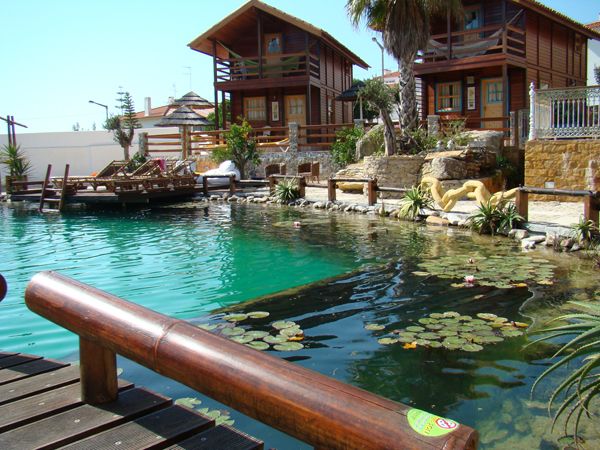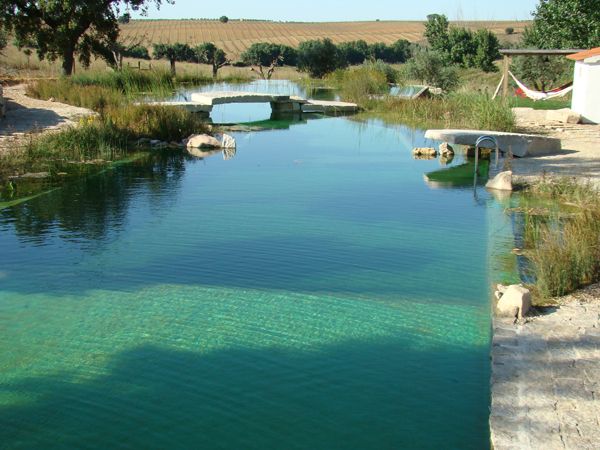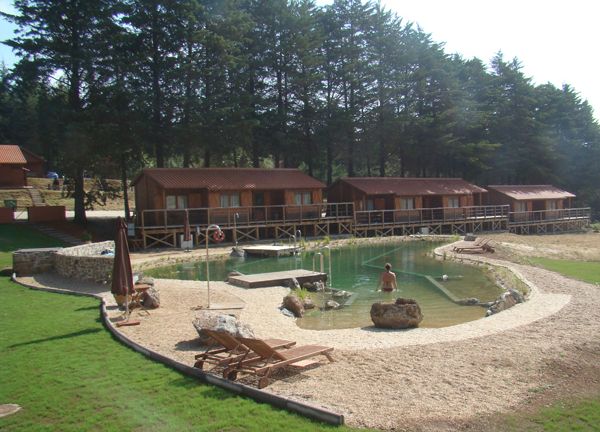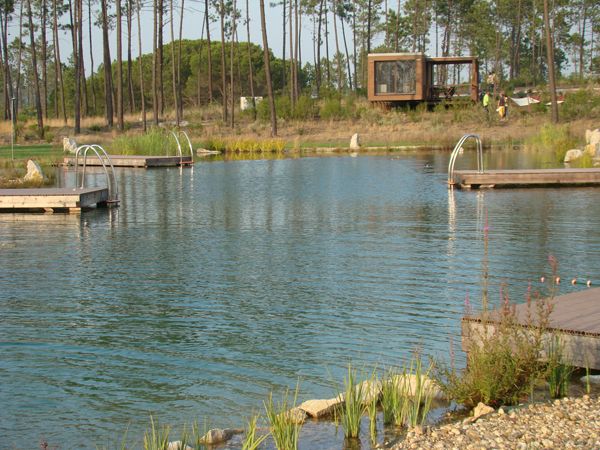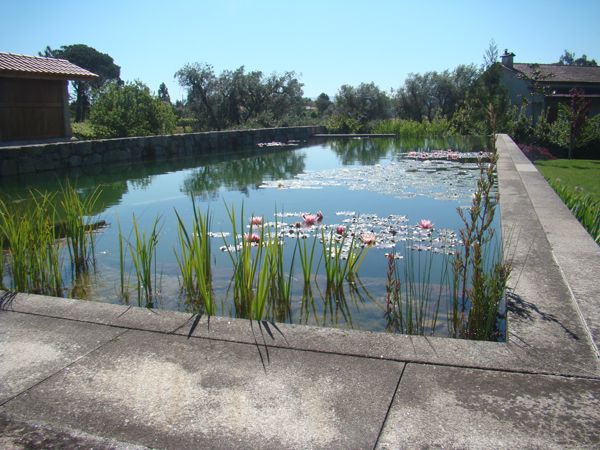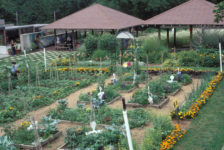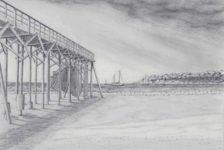Claudia Schwarzer from Bio Piscinas gives us a detailed account of her own experience of designing and creating natural swimming pools. In the 20 years I have worked as a landscape architect in Portugal, my firm has designed more than 170 swimming ponds, 40 for tourist use. So I know the challenges of placing water features into the Mediterranean landscape. For me and for our clients, it is important to design the swimming ponds to be as natural as possible, so that they look like they have always been there. I am used to working with living things, like gardens and parks. But for me, a swimming pond goes far beyond the sum of its parts. It is biologically alive, offering more than just a place to swim. Swimming in a pond allows us to get close to nature in an extraordinary way — diving with frogs, smelling the sweet perfume of the water lily. It’s enchanting and inviting for everyone, even those who are not yet nature lovers.
Designing swimming ponds is my favorite work as a landscape architect. What I especially like about designing a swimming pond is that it is a classic case of interdisciplinary work; we have to bring together ecology, botanics, geology, hydrology, biology, limnology, climatology, water chemistry, design, landscape aesthetic, and so on. And our intuition and experience with landscape is important, as well. I find it very helpful to work with my husband, Udo Schwarzer. As a biologist, he has a very different approach to our work, and together we can answer a wide range of questions asked of a swimming pond project. Swimming ponds are also very exciting constructions. They provide for natural bathing with no ill effects on human health or the environment. They allow swimmers to experience natural bathing water, free of chlorine or any other chemical additives, and to become one with their natural surroundings. At the same time, an ecosystem is establishing itself into our designed water feature. Yes, we created this habitat, but it is nature that brings life to the swimming pond. No matter how many times I experience it, it is always a surprise for me: the encounter with the enormous power and creativity of life. The artificial ecosystem, planted by man, is very quickly colonized by wildlife. Frogs seem to come from nowhere — sometimes only questioning a matter of hours. Swallows drop in for a dip of water while flying, and dragonflies soon hunt over the new water mirror. It’s always astonishing to see how quickly life takes over what we have designed. When configured well, the growth of aquatic micro-cosmos automatically offers recreational water quality. It is fascinating to watch this with every new pond, not only for me, but for our clients and fans. Swimming ponds look very simple, but they are not. Creating something that looks like a simple pond takes a lot of knowledge. It is a demanding job to create a stable, dynamic equilibrium of the ecosystem, to be sure that it will work as it should the whole year round and into the future. I would like to call it applied biotechnology or biomimicry. We have created a wide range of swimming pond types. In addition to the very natural-looking swimming pond of our own brand, piscinas biológicas®, we have also transformed swimming pools and water basins into ponds. When we have very limited space available, or if we want to create very architectonical water features for swimming — for example, an infinity edge — we have to come up with other solutions, like working with external filtering systems. In these situations, we apply biological substrate filters in which the water pours through special gravel layers coated with a biofilm that is a kind of living filter matrix, cleaning the water of particles and nutrients. Those types of filters are often used in our swimming ponds built for tourist houses, where the frequency of bathers is higher than in installations for private use. Water, of course, is one of the essential and main components for a swimming pond.Together with a colleague from Austria, we have developed software for interpretation of water analysis, called POND ANALYST, to avoid traps and mistakes related to water chemistry in swimming ponds. Every project starts with an analysis of the filling water. Even with our long experience, we use the program for every one of our projects, simply for quality reasons. POND ANALYST gives us valuable hints about certain mineral amounts of the filling water and how they will interact with the right plants. We use a wide variety of water plants, produced exclusively for our projects in a nursery. This nursery was installed by our initiative, because our plant choices and plant functions are crucial for every swimming pond project. Underwater plants are of special importance, not only for oxygen for the ecosystem, but also for filtering zooplankton for the biological filtering system. In doing so, we can make sure that the water is of recreational quality, transparent, and free of harmful bacteria. We feel that chlorine’s time is running out; people are beginning to realize that chlorinated water is harmful for human health and the environment. Our clients in Portugal love the soft and smooth chlorine-free water, which means no dry skin and no red eyes anymore after having a swim. They and many other people in the world, and as well an increasing number of authorities, are switching their allegiance to natural swimming pools. Swimming ponds are eco-friendly and sustainable. This is the future! For more information and projects from Bio Piscinas, Lda. check out www.biopiscinas.pt Recommended reading: Natural Swimming Pools: (Schiffer Design Books) by Michael Littlewood Garden Pools and Swimming Ponds Design, Construction, and Landscape by Richard WeixlerLogin
Lost Password
Register
If this is your first time on the new site, please click "Forgot your password?". Follow the steps to reset your password. It may be the same as your old one.



